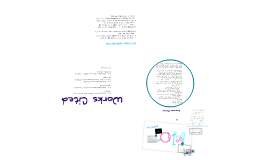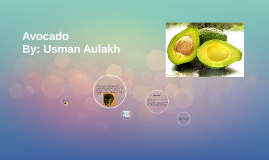Avocado
Transcript: Xiguan or Sai Kwan (simplified Chinese: 西关; traditional Chinese: 西關; pinyin: Xīguān; Jyutping: Sai1 Gwaan1; literally: "West Gate") is a traditional geographical division of Guangzhou, China. It is the former name of the Liwan District that reaches Xicun (Chinese: 西村; pinyin: Xīcūn; Jyutping: Sai1 Cyun1; literally: "West Village") in the north and borders on Renmin Road Nectarine Watermelon (Citrullus lanatus var. lanatus, family Cucurbitaceae) is a vine-like (scrambler and trailer) flowering plant originally from southern Africa. Its fruit, which is also called watermelon, is a special kind referred to by botanists as a pepo, a berry which has a thick rind (exocarp) and fleshy center (mesocarp and endocarp). Pepos are derived from an inferior ovary, and are characteristic of the Cucurbitaceae. The mango is a fleshy stone fruit belonging to the genus Mangifera, consisting of numerous tropical fruiting trees, that are cultivated mostly for edible fruits. The majority of these species are found in nature as wild mangoes. They all belong to the flowering plant family Anacardiaceae. The mango is native to South and Southeast Asia, from where it has been distributed worldwide to become one of the most cultivated fruits in the tropics. Coconut The apple is the pomaceous fruit of the apple tree, species Malus domestica in the rose family (Rosaceae). It is one of the most widely cultivated tree fruits, and the most widely known of the many members of genus Malus that are used by humans. Apples grow on small, deciduous trees. The tree originated in Central Asia, where its wild ancestor, Grapefruit Apple The quince /ˈkwɪns/ (Cydonia oblonga) is the sole member of the genus Cydonia in the family Rosaceae (which also contains apples and pears, among other fruits). It is a small deciduous tree that bears a pome fruit, similar in appearance to a pear, and bright golden-yellow when mature. Throughout history the cooked fruit has been used as food, but the tree is also grown for its attractive pale pink blossom and other ornamental qualities Honeydew The variety P. persica var. nucipersica (or var. nectarina), commonly called nectarine, has a smooth skin. It is on occasion referred to as a "shaved peach", "fuzzy-less peach", "juicy peach", or "Brazilian peach" due to its lack of fuzz or short hairs. Though fuzzy peaches and nectarines are regarded commercially as different fruits, with nectarines often erroneously believed to be a crossbreed between peaches and plums, or a "peach with a plum skin", nectarines belong to the same species as peaches The tomato is the edible, often red fruit/berry of the nightshade Solanum lycopersicum,[1][2] commonly known as a tomato plant. The species originated in the South American Andes[2] and its use as a food originated in Mexico, and spread throughout the world following the Spanish colonization of the Americas. Its many varieties are now widely grown, sometimes in greenhouses in cooler climate Elderberry The grapefruit (Citrus × paradisi) is a subtropical citrus tree known for its sour to semi-sweet fruit, an 18th-century hybrid first bred in Barbados.[1] When found, it was named the "forbidden fruit";[2] and it has also been misidentified with the pomelo or shaddock (C. maxima), one of the parents of this hybrid, the other being sweet orange Ita plam The papaya /pəˈpaɪə/ or /pəˈpɑːjə/ (from Carib via Spanish), papaw, or pawpaw is the fruit of the plant Carica papaya, the sole species in the genus Carica of the plant family Caricaceae. It is native to the tropics of the Americas, perhaps from southern Mexico and neighbouring Central America Ziziphus jujuba (from Greek ζίζυφον, zizyfon[2]), commonly called jujube[3] (sometimes jujuba), red date, Chinese date,[3] Korean date, or Indian date is a species of Ziziphus in the buckthorn family (Rhamnaceae), used primarily as a shade tree that also bears fruit. Fig Lime (from Arabic and French lim)[1] is a term referring to a citrus fruit which is typically round, green, 3–6 cm in diameter, and containing sour (acidic) pulp. There are several species of citrus trees whose fruits are called limes, including the Key lime, Persian lime, kaffir lime, and desert lime. Limes are a good source of vitamin C, and are often used to accent the flavours of foods and beverages. They are grown year-round and are usually smaller and less sour than lemons Jujube The Spanish tamarind is a round fruit, that is green with white dots, and that turns brown when fully ripe. It is 1.5 to 2 in (about 4 to 5 cm) in diameter. The pulp is moderately juicy, with a slightly acidic flavor. It is locally grown, and is generally eaten fresh Dragon Fruit Zucchini Yellow Watermelon Quince The ita palm, Mauritia flexuosa, is a tall palm tree native to tropical regions of South America. It produces edible fruit and fibers suitable for making thread. Its common name, "Tree of Life," indicates its usefulness. The ita palm grows vigorously, but is restricted to tropical and

















